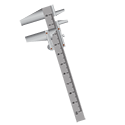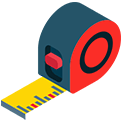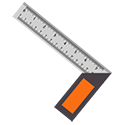LINEAR TRANSMISSION
SEALS
SEALING ACCESSORIES
ROLLER CHAIN
TIMING BELT PULLEY
 TIMING BELT PULLEY T2.5 2,5MM
TIMING BELT PULLEY T2.5 2,5MM
 TIMING BELT PULLEY T5 5MM
TIMING BELT PULLEY T5 5MM
 TIMING BELT PULLEY T10 10MM
TIMING BELT PULLEY T10 10MM
 TIMING BELT PULLEY AT5 5MM
TIMING BELT PULLEY AT5 5MM
 TIMING BELT PULLEY AT10 10MM
TIMING BELT PULLEY AT10 10MM
 TIMING BELT PULLEY 3M 3MM
TIMING BELT PULLEY 3M 3MM
 TIMING BELT PULLEY 5M 5MM
TIMING BELT PULLEY 5M 5MM
 TIMING BELT PULLEY 8M 8MM
TIMING BELT PULLEY 8M 8MM
 TIMING BELT PULLEY 14M 14MM
TIMING BELT PULLEY 14M 14MM
 TIMING BELT PULLEY L 9,52MM
TIMING BELT PULLEY L 9,52MM
 TIMING BELT PULLEY XL 5,08MM
TIMING BELT PULLEY XL 5,08MM
 TIMING BELT PULLEY H 12,7MM
TIMING BELT PULLEY H 12,7MM
RIBBED BELT PULLEY
ACCESSORIES AND TOOLS
CYLINDRICAL BUSHES
RETAINING RING
BALLS AND NEEDLES
WASHER
 DEEP GROOVE BALL BEARING
DEEP GROOVE BALL BEARING
 NEEDLE ROLLER BEARING
NEEDLE ROLLER BEARING
 ROLLER BEARING
ROLLER BEARING
 HOUSED BEARING
HOUSED BEARING
 ROD END
ROD END
 LINEAR TRANSMISSION
LINEAR TRANSMISSION
 OTHER BEARINGS
OTHER BEARINGS
 GEARBOX BEARING
GEARBOX BEARING
 AGRICULTURAL BEARINGS
AGRICULTURAL BEARINGS
 WHEEL BEARING
WHEEL BEARING
 SINGLE ROW
SINGLE ROW
 DOUBLE ROW
DOUBLE ROW
 CERAMIC BEARING
CERAMIC BEARING
 THRUST BALL BEARING
THRUST BALL BEARING
 SELF ALIGNING BALL BEARING
SELF ALIGNING BALL BEARING
 CASTOR BEARING
CASTOR BEARING
 HIGH TEMPERATURE
HIGH TEMPERATURE
 CAM FOLLOWER
CAM FOLLOWER
 TRACK ROLLER
TRACK ROLLER
 MAST GUIDE BEARING
MAST GUIDE BEARING
 BALL BEARING RETAINER
BALL BEARING RETAINER
 DRAWN CUP ROLLER BEARING
DRAWN CUP ROLLER BEARING
 NEEDLE ROLLER BEARING
NEEDLE ROLLER BEARING
 AXIAL NEEDLE ROLLER
AXIAL NEEDLE ROLLER
 INNER RING
INNER RING
 NEEDLE ROLLER CAGE
NEEDLE ROLLER CAGE
 DRAWN CUP ROLLER CLUTCHES
DRAWN CUP ROLLER CLUTCHES
 TAPERED ROLLER BEARING
TAPERED ROLLER BEARING
 ROLLER BEARING
ROLLER BEARING
 YOKE TYPE TRACK ROLLER
YOKE TYPE TRACK ROLLER
 SPHERICAL ROLLER BEARING
SPHERICAL ROLLER BEARING
 THRUST ROLLER BEARING
THRUST ROLLER BEARING
 ROLLER BEARING CAGE
ROLLER BEARING CAGE
 RAW CONE
RAW CONE
 RAW CUP
RAW CUP
 HOUSED BEARING 0 BOLT
HOUSED BEARING 0 BOLT
 HOUSED BEARING 1 BOLT
HOUSED BEARING 1 BOLT
 HOUSED BEARING 2 BOLTS
HOUSED BEARING 2 BOLTS
 HOUSED BEARING 3 BOLTS
HOUSED BEARING 3 BOLTS
 HOUSED BEARING 4 BOLTS
HOUSED BEARING 4 BOLTS
 HOUSED BEARING ACCESSORIES
HOUSED BEARING ACCESSORIES
 TSM ROD END
TSM ROD END
 TSF ROD END
TSF ROD END
 GE ROD END
GE ROD END
 DIN ROD END
DIN ROD END
 GEG ROD END
GEG ROD END
 SQ ROD END
SQ ROD END
 SA ROD END
SA ROD END
 SSR ROD END
SSR ROD END
 SI ROD END
SI ROD END
 GEEW ROD END
GEEW ROD END
 SQZ ROD END
SQZ ROD END
 TPN ROD END
TPN ROD END
 TAC ROD END
TAC ROD END
 SQL ROD END
SQL ROD END
 GEK ROD END
GEK ROD END
 PHS ROD END
PHS ROD END
 GEZ ROD END
GEZ ROD END
 GEEM ROD END
GEEM ROD END
 TAPR ROD END
TAPR ROD END
 GAC ROD END
GAC ROD END
 GX ROD END
GX ROD END
 OTHER ROD ENDS
OTHER ROD ENDS
 LINEAR BEARING
LINEAR BEARING
 SEAL
SEAL
 SEALING ACCESSORIES
SEALING ACCESSORIES
 O-RING SEAL
O-RING SEAL
 ROTARY SHAFT SEAL
ROTARY SHAFT SEAL
 HYDRAULIC SEAL
HYDRAULIC SEAL
 V-RING SEAL
V-RING SEAL
 X-RING SEAL
X-RING SEAL
 SEALING WASHER
SEALING WASHER
 WIPER SEAL
WIPER SEAL
 ROPE SEAL
ROPE SEAL
 VK EC END COVER
VK EC END COVER
 NILOS SEALS
NILOS SEALS
 OTHER SEALS
OTHER SEALS
 PISTON SEAL
PISTON SEAL
 PNEUMATIC SEAL
PNEUMATIC SEAL
 SEAL ASSORTMENT
SEAL ASSORTMENT
 AUTOMOTIVE SEAL
AUTOMOTIVE SEAL
 BACK-UP RING
BACK-UP RING
 SPEEDI-SLEEVE
SPEEDI-SLEEVE
 BELT
BELT
 ROLLER CHAIN
ROLLER CHAIN
 SPROCKET
SPROCKET
 TAPER BUSHING
TAPER BUSHING
 V-GROOVED PULLEY
V-GROOVED PULLEY
 TIMING BELT PULLEY
TIMING BELT PULLEY
 RACK & SPUR GEAR
RACK & SPUR GEAR
 RIBBED BELT PULLEY
RIBBED BELT PULLEY
 V-BELT
V-BELT
 RAW EDGE COGGED V-BELT
RAW EDGE COGGED V-BELT
 TOOTHED BELT
TOOTHED BELT
 POLY-V BELT
POLY-V BELT
 HEXAGONAL BELT
HEXAGONAL BELT
 VARIATOR BELT
VARIATOR BELT
 BELT ACCESSORIES
BELT ACCESSORIES
 SIMPLEX
SIMPLEX
 DUPLEX
DUPLEX
 TRIPLEX
TRIPLEX
 CONNECTING LINK
CONNECTING LINK
 OFFSET LINK
OFFSET LINK
 SIMPLEX SPROCKET
SIMPLEX SPROCKET
 DUPLEX SPROCKET
DUPLEX SPROCKET
 TRIPLEX SPROCKET
TRIPLEX SPROCKET
 IDLER SPROCKET
IDLER SPROCKET
 V-GROOVED PULLEY SPA
V-GROOVED PULLEY SPA
 V-GROOVED PULLEY SPB
V-GROOVED PULLEY SPB
 V-GROOVED PULLEY SPC
V-GROOVED PULLEY SPC
 V-GROOVED PULLEY SPZ
V-GROOVED PULLEY SPZ
 SPUR GEAR
SPUR GEAR
 GEAR RACK
GEAR RACK
 RIBBED BELT PULLEY PL
RIBBED BELT PULLEY PL
 RIBBED BELT PULLEY PJ
RIBBED BELT PULLEY PJ
 LUBRICANT
LUBRICANT
 ADHESIVE
ADHESIVE
 PENETRANT
PENETRANT
 LUBRICANT
LUBRICANT
 GREASE
GREASE
 DEGREASER
DEGREASER
 CLEANER
CLEANER
 THREADLOCKER
THREADLOCKER
 GLUE
GLUE
 ADHESIVE
ADHESIVE
 GASKET SEALER
GASKET SEALER
 GASKET SEALING
GASKET SEALING
 CYLINDRICAL BUSHES
CYLINDRICAL BUSHES
 RETAINING RING
RETAINING RING
 BALLS AND NEEDLES
BALLS AND NEEDLES
 WASHER
WASHER
 TOOLS
TOOLS
 ANTI VIBRATION
ANTI VIBRATION
 LOCK NUT
LOCK NUT
 ADAPTER SLEEVE
ADAPTER SLEEVE
 PAP BUSHES
PAP BUSHES
 FLANGED BUSH PAF
FLANGED BUSH PAF
 BRONZE BUSHES WITH COLLAR
BRONZE BUSHES WITH COLLAR
 BRONZE BUSHES
BRONZE BUSHES
 EXTERNAL RETAINING RING
EXTERNAL RETAINING RING
 INTERNAL RETAINING RING
INTERNAL RETAINING RING
 E-CLIP
E-CLIP
 CIRCLIP PLIERS
CIRCLIP PLIERS
 NEEDLE
NEEDLE
 BALLS
BALLS
 BALL BEARING RETAINER
BALL BEARING RETAINER
 THRUST WASHER
THRUST WASHER
 LOCK WASHER
LOCK WASHER
 WAVE SPRING WASHER
WAVE SPRING WASHER
 COMPRESSION WAVE SPRING WASHER
COMPRESSION WAVE SPRING WASHER
 MULTIWAVE COMPRESSION SPRINGS
MULTIWAVE COMPRESSION SPRINGS
 OVERLAP WAVE SPRING WASHER
OVERLAP WAVE SPRING WASHER
 CURVED SPRING WASHER
CURVED SPRING WASHER
 SPRING DISC DIN2093
SPRING DISC DIN2093
 FINGER SPRING WASHER
FINGER SPRING WASHER
 SPLIT WAVE SPRING WASHER
SPLIT WAVE SPRING WASHER
 WAVE SPRING ROUND WIRE
WAVE SPRING ROUND WIRE
 CIRCLIP PLIERS
CIRCLIP PLIERS
 DIMENSIONAL MEASUREMENT
DIMENSIONAL MEASUREMENT
 MOUNTING - DISMOUNTING
MOUNTING - DISMOUNTING
 GREASE - LUBRICATION
GREASE - LUBRICATION
 ALIGNMENT - INSPECTION
ALIGNMENT - INSPECTION
 MM ANTI-VIBRATION
MM ANTI-VIBRATION
 MF ANTI-VIBRATION
MF ANTI-VIBRATION
 PM ANTI-VIBRATION
PM ANTI-VIBRATION
 FF ANTI-VIBRATION
FF ANTI-VIBRATION
 PF ANTI-VIBRATION
PF ANTI-VIBRATION
 ANTI-VIBRATION MACHINE BASE
ANTI-VIBRATION MACHINE BASE
 PMP ANTI-VIBRATION
PMP ANTI-VIBRATION
 ANTI VIBRATION DIABOLOS
ANTI VIBRATION DIABOLOS
 PFP ANTI-VIBRATION
PFP ANTI-VIBRATION
 Vernier caliper
Vernier caliper
 One meter
One meter
 A rule
A rule
 Your belt
Your belt


